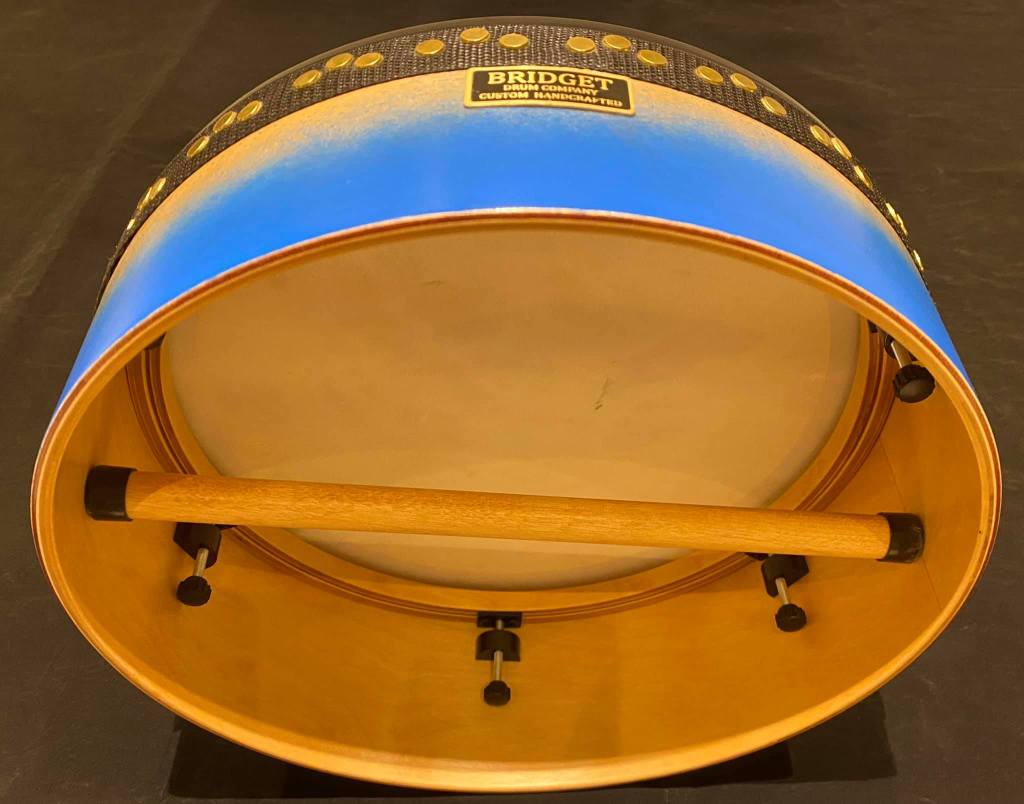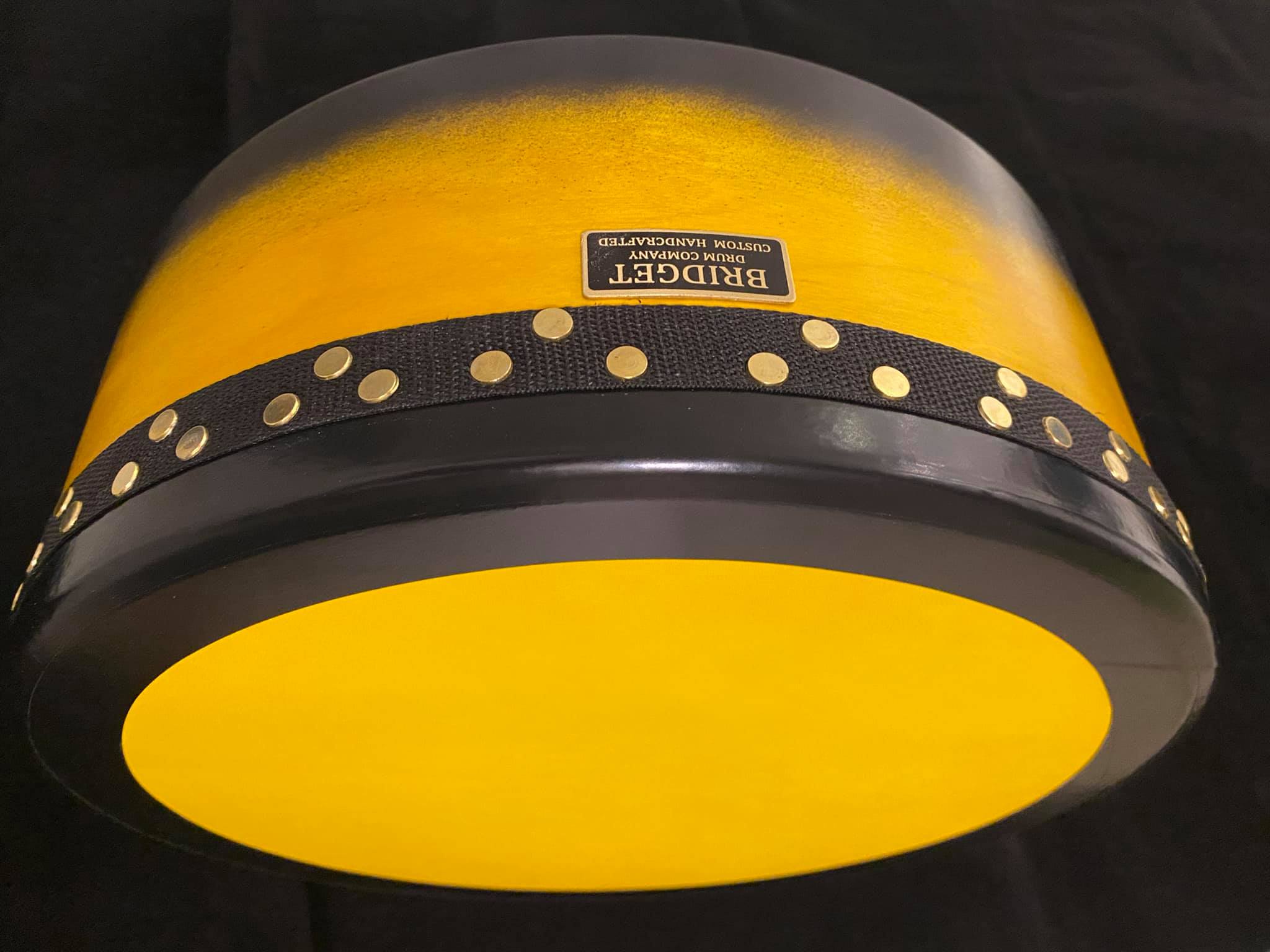
Bridget Drums
” We Build The Art Of Bodhrans”

Barbarian Bodhrans
Some of our custom builds














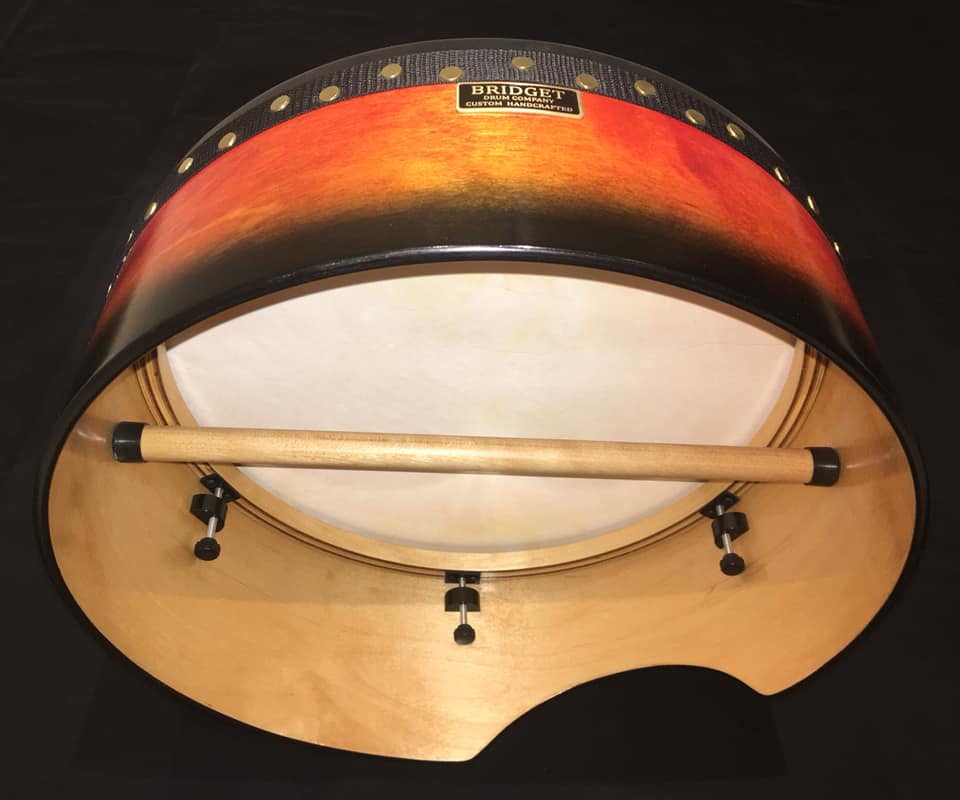
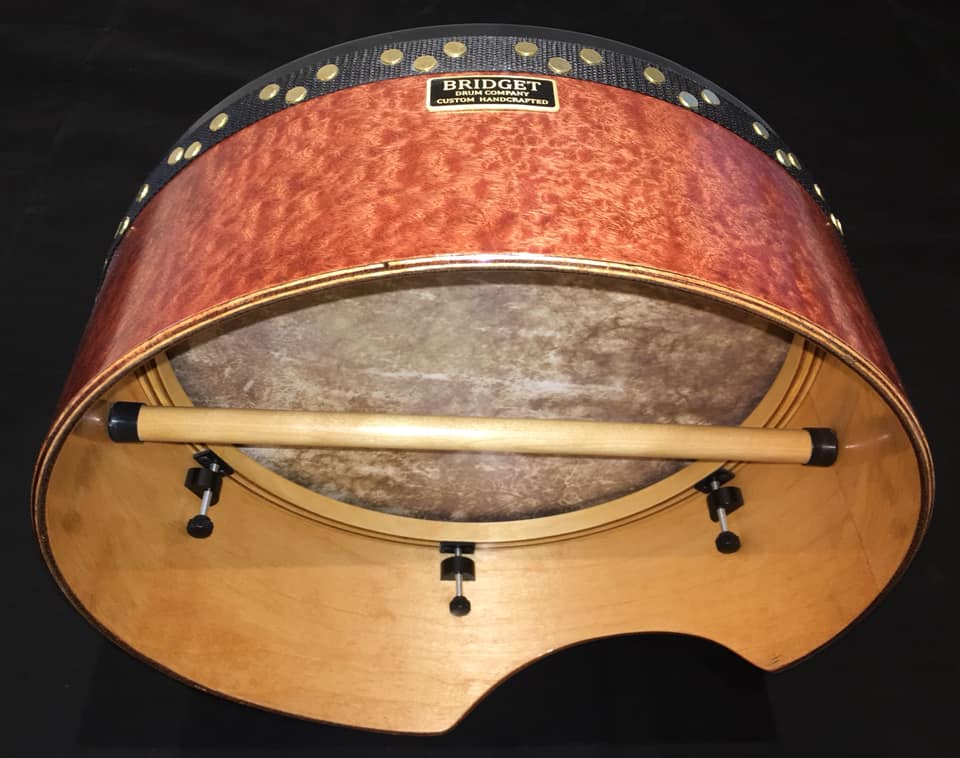
Some of our Dyed heads


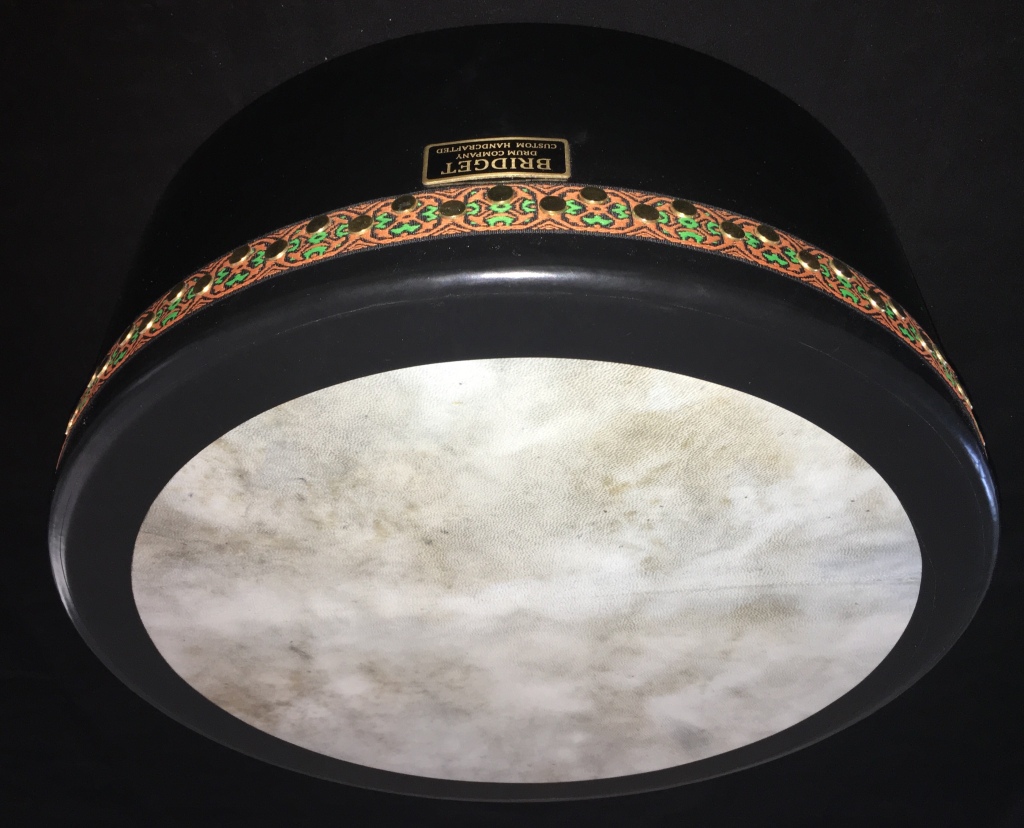



Nano Spray Technology

Nano Coating is a sealant for impregnation which forms a transparent hydrophobic and oleophobic coating, protecting the drum head from water, dirt, food, etc.
The Nano Coating is added while the head is being cured. (stretched and dried).
BENEFITS:
- Self – cleaning effect
- Protects the surface from water, liquids, dirt, food.
- Does not allow the dirt to penetrate the pores of the treated surface.
- Protects from bacteria, mould, and fungal growth.
- Allows the treated surfaces to breath.
- Harmless to health.
Bridget Tippers

About US
Russell Duke who is a professionally educated Cabinet maker and drum enthusiast, combined his love of woodworking and drumming in 1996 and Bridget Drums was born.
Since that date, the primary focus is on Professionally Crafted Bodhran Drums. Each Drum is as unique as the player it is Crafted for.
We use only the finest materials, including multi-layer select grade Birch for our shells, Aircraft grade powder coated Aluminum for our tuning system, and select grade chemically treated or natural goat skin that has been a by-product of a food source first. (All heads are now treated with NANO spray)
- We offer a one year Warranty on Craftsmanship and materials, minus the drum head.
Buying considerations
When looking into purchasing a Bodhran, the task can be a little overwhelming to say the least. Any internet search can be daunting and downright intimating, especially to a new player wanting to buy their first bodhran or even a seasoned player wanting to buy a quality instrument.
This is the citation.
This information is meant to help you not only learn what a high quality bodhran should have but what it should not have.
A little about myself the writer. I am a drum builder and have built thousands of high quality bodhran drums. I started out many years ago, when I bought my first bodhran that failed miserably. I had very little knowledge what to look for in a quality bodhran and decided to do my own research by asking bonified bodhran players what they looked for in a bodhran. I built my very own bodhran and incorporated a design that bodhran players looked for, and my Bodhran company was born. Some twenty something years later, we are going strong, building for players like yourself all over the world.
I will talk about the features I use in our drums and why. I hope this helps eleviate some of the stress and anxiery of buying a bodhran. I believe you can buy your very last bodhran first.
The shell
There are usually several options available.
A steam bent one or two ply which is glued with a scarf joint where the ends meet. This is a very poor option, due to the potential of the scarf joint breaking, the wood has a very high tendency to warp due to the wood wanting to go back to its original state.
A Stave shell is many pieces of blocks of wood glued together. The issue with staves are the material tends to be very thick and heavy. Good for snare drums, congas ect. But a poor choice for a bodhran.
Veneered shell, which is definitely the best choice for a bodhran due to its strong quality’s, and it does not have a tendency to warp. The wood grain should be glued in opposite directions, if not the shell will have a tendency to warp.
There are options of hardwood, exotic wood and softwood. Hardwood is the best choice due to its strength and durability. Exotic hardwood look great but hard on the pocket book. Softwood is weaker and a higher potential for dents ect. Birch and maple are the most cost effective and are very strong. If you want an exotic finish, ask about a single veneer.
Tuning lugs
There are many options of drums with a tuning mechanism, and many materials are used to make them including wood (which is a poor choice for a tuning system). The best choice would be a metal such as Aircraft grade Aluminum which is extremely strong and lightweight (which we use on our drums). The tuning lugs should be rounded and not have any sharp edges. The two most popular tuners are thumb and Allan key tuners. The screws (dog screws) that push on an inner tuning ring should not push directly on the inner tuning ring wood (the screw will eat through it in no time). The dog screw should be seated on a flat plate of sorts. Word to the wise, there are builders that use their local metal currency for their flat plates. Because it is a Criminal Offence to deface or destroy currency, it could be problematic for you. Some builders paint their tuning lugs, but I prefer to use Power Coating which is much stronger than paint.
The drum head
There are two main options when it comes to the drum head. There are synthetic heads made from mylar plastic and natural animal skin such as goat, calf, kangeroo ect. The skin can be natural which is stiffer and takes a very log time to break in ( becomes warmer in tone) or a chemically treated skin which I believe is much more superior to the natural skin because they tend to be softer and warmer in tone, less susceptible to humidity, and more tare resistant (we offer both choices on our drums).
Inner stability bar
There are usually several options when it comes to inner stability bars such as a cross bar, straight bar, T bar or no bar at all. I personally prefer a straight bar that is round and no more than ¾” thick. There tends to be a standard distance between the bar and the head, so as not to impede the players hand.
Drum sizes
There are many options when it comes to drums, but 14” diameter and up to 20” diameter tends to be the most popular. The bigger the drum, the bigger the sound. There are also depth options and I have found that anything deeper than 6” is a waste of your hard earned money. If you want that big sound and are smaller in stature or you have a shorter arm span, you have the option of an arm cut out from the shell. This allows you to get a larger size drum with compromising comfort.
Bearing edge
The two most popular bearing edges (where the drum head meets the shell) is a chamfer and a rounded edge. A chamfer edge tends to be sharper and could cut the head. The rounded edge is much safer on the head, and tends to make the drum warmer in sound (which we use on our drums).
Cost
You have many options when it comes to cost. Keep in mind, you get what you pay for. Stay away from mass-produced drums from Pakistan (the box it comes in tents to sound better than the drum), drums that have a logo painting on the head (these are meant for the wall over your bar next to the Irish Whisky). A builder should be building a drum to suit your individual needs, after all, would you want to wear a tailored outfit made for someone else, or made for you!
I hope this helps, and if you have any questions, please do not hesitate to contact us, after all, “We Build The Art Of Bodhrans”
Our Rates
Canadian Currency (plus Shipping)
14″ x 4.5″ $370.00
16″ x 4″ $395.00
18″ x 4″ $420.00
14″ x 6″ $420.00
16″ x 6″ $445.00
18: x 6″ $470.00
Arm cutout $25.00 ( on 6″ deep only)
Star Burst on Shell $10.00
Exotic veneer $75.00
Taped Head $25.00
Dyed head $30.00
Thumb tuners $20.00 ( with extra dog screws and allen tuner)
3/16″ x 9″ rod tipper $25.00
1/4″ x 9″ rod tipper $25.00
Get In Touch
Email: russell72@live.com
Facebook Bridget Drums
Instagram Bridget Drums
Telephone (705) 571 1336
Mailing Address
PO Box 48
Burks Falls Ontario Canada P0A 1C0


